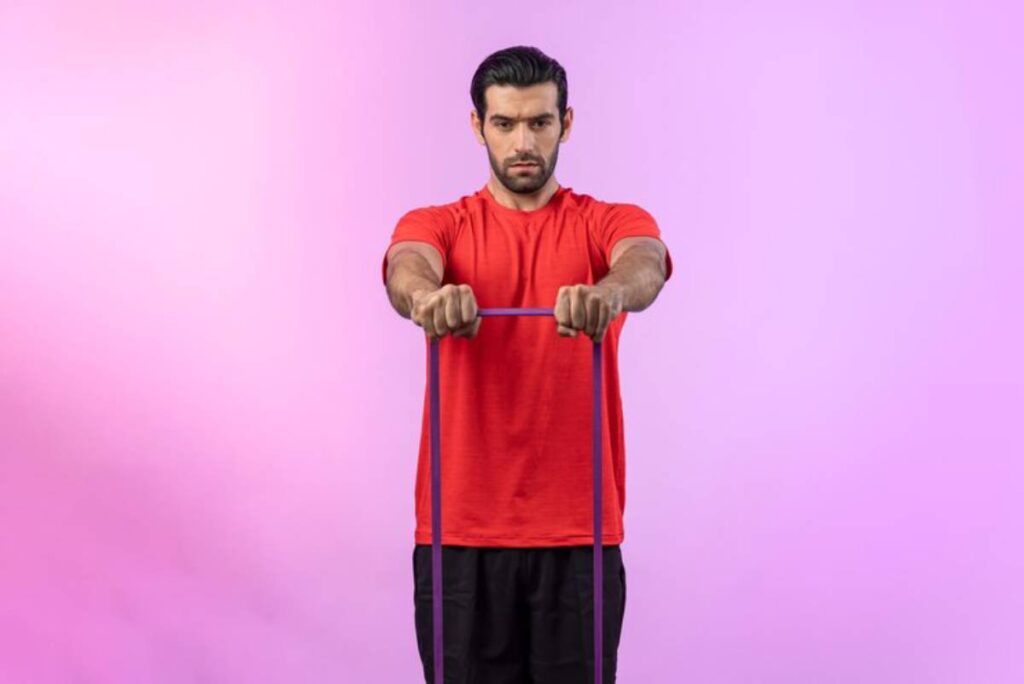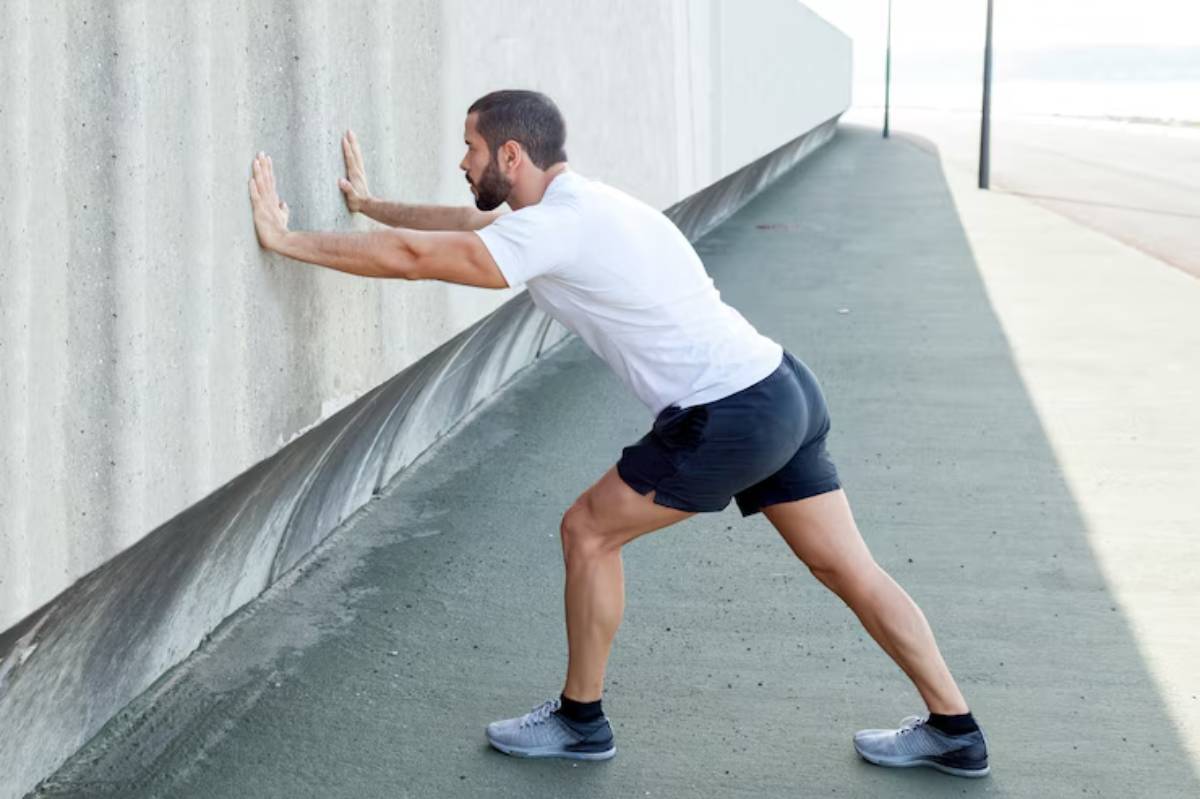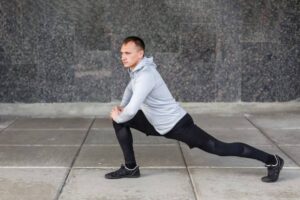The Fitness Blog

Shoulder Mobility to Improve Pressing Power
Let’s talk about something often ignored until it causes pain: shoulder mobility. You know the feeling: you’re warming up for your bench press, but your shoulders feel stiff, your elbows flare out, and your reps feel more forced than fluid. Whether you’re pushing for a new personal best or just trying to stay injury-free, neglecting shoulder mobility will eventually catch up with you.
The shoulder joint is remarkably mobile, but that also makes it vulnerable. If your upper body routine includes bench pressing, overhead pressing, or even Olympic lifts, then shoulder mobility drills should be part of your weekly prep, not an afterthought. This isn’t just about injury prevention—it’s about unlocking your true pressing potential.
In this guide, we’ll dive into how to prepare your shoulders for pressing, why rotator cuff flexibility is a non-negotiable, and which movements provide the biggest payoff for performance and longevity. By the end, you’ll have a clear, practical strategy to warm up smarter and press stronger.
Why Shoulder Mobility Matters for Pressing Movements
It’s a Ball-and-Socket Joint for a Reason
The shoulder is the most mobile joint in the body, capable of flexion, extension, abduction, adduction, and rotation. But with great range comes great responsibility. Without stability and control, mobility becomes a liability.
Poor shoulder mobility affects your pressing in ways you might not realise:
- Reduced power output: Tight muscles limit your pressing range, affecting bar path and efficiency.
- Increased injury risk: Impingement, tendinitis, and rotator cuff tears are often mobility-related.
- Compensations in technique: Your elbows flare, your lower back overextends, and your form suffers.
So, whether you’re setting up for a heavy bench press or pushing overhead, proper bench press shoulder prep starts with mobility and control.
The Key Muscles Behind Shoulder Movement
It’s More Than Just the Delts
To move and stabilise your shoulder joint effectively, several muscles must work in harmony:
- Rotator cuff (supraspinatus, infraspinatus, teres minor, subscapularis) – stabilises the joint capsule
- Pectorals (major and minor) – drive pressing, but can restrict movement when tight
- Latissimus dorsi – crucial for pulling and stabilising; tight lats limit overhead motion
- Trapezius (especially lower and mid fibres) – controls scapular movement
- Rhomboids and serratus anterior – essential for scapular stability and retraction
If any of these are weak, overactive, or immobile, your press suffers. That’s why shoulder mobility drills that target both movement and muscle balance are so effective.
What Shoulder Mobility Actually Involves
It’s More Than Just Stretching
Mobility isn’t just flexibility—it’s the ability to move through a full range with control. That means actively engaging muscles as you move, not just holding static stretches.
True mobility work includes:
- Dynamic movements that mimic the demands of the lift
- Controlled articular rotations (CARs) to maintain joint integrity
- Soft tissue release to loosen up restrictions (e.g. foam rolling)
- Stability drills to reinforce safe patterns
And yes, a flexible muscle can still be weak. So, mobility work should focus on movement quality, not just how far one can reach.
Signs You Need More Shoulder Mobility
Not sure if your pressing is being held back by mobility issues?
Watch out for these signs:
- You can’t fully retract your scapula during bench press setup
- You feel a pinching or discomfort at the front of the shoulder while pressing
- Your elbows flare out when pressing overhead
- You can’t reach overhead without arching your back
- You experience rotator cuff tenderness or aching after sessions
If any of these ring true, it’s time to make rotator cuff flexibility and scapular control a priority.

Best Shoulder Mobility Drills for Pressing Power
Here’s Where It Gets Practical
Let’s examine the specific drills that directly support your pressing performance. These movements are accessible, scalable, and highly effective when performed consistently.
1. Wall Slides with Chin Tuck
Purpose: Activates the serratus anterior, improves scapular upward rotation
How: Stand against a wall, arms in a goalpost position. Slide arms up while keeping head and spine neutral, chin slightly tucked. Focus on slow, controlled movement.
2. Banded Shoulder Dislocates
Purpose: Enhances shoulder external rotation and opens up the chest
How: Using a light resistance band, hold it wide and circle it slowly over and behind your head. Keep arms straight. Gradually narrow the grip as your range improves.
3. Sleeper Stretch with Resistance Band
Purpose: Targets internal rotator flexibility (especially for bench press)
How: Lie on your side, arm at 90 degrees, gently rotate the forearm down with assistance from the other hand or a resistance band. Don’t force range—slow and controlled is key.
4. Scapular Push-Ups
Purpose: Builds scapular stability and awareness
How: From a plank position, keep arms straight and pinch shoulder blades together, then spread them apart. Small, deliberate motion only at the shoulder blades.
5. Thoracic Spine Rotations (Quadruped or Seated)
Purpose: Improves T-spine mobility, which supports overhead positioning
How: In a quadruped stance, place one hand behind your head and rotate up, elbow leading. Rotate through the mid-back, not the lower back.

Structuring a Shoulder Mobility Routine
Time-Efficient and Sustainable
You don’t need an hour. Just 10–15 minutes before pressing sessions, and another 10 minutes post-workout or on active recovery days, can work wonders.
Before Pressing (Activation Focus):
- Wall slides: 2 sets x 10 reps
- Banded dislocates: 2 sets x 8–12 reps
- Scapular push-ups: 2 sets x 10 reps
After Pressing (Restoration Focus):
- Sleeper stretch: 2 x 30 seconds per arm
- Thoracic rotations: 2 sets x 8 per side
- Foam roll lats and pecs: 1–2 mins per area
Tip: If you’re already using mobility for other lifts, consider how to integrate recovery into your weekly routine without feeling overwhelmed.
How Shoulder Mobility Translates to Bench and Overhead Press
The Real Payoff
Improved shoulder mobility helps you:
- Retract and depress your scapula for a stable bench press setup
- Keep elbows at a safe angle, reducing rotator cuff strain
- Maintain the vertical bar path in overhead pressing
- Avoid flaring or compensating with your lower back
- Press more efficiently, which equals more strength and less wear and tear
It also helps you train longer and harder, without those annoying little tweaks that become chronic over time.
Avoiding Common Shoulder Mobility Mistakes
Keep It Smart, Not Just Stretchy
1. Rushing through drills
Mobility is about control, not speed. Take your time to move with intent.
2. Doing mobility cold
Always warm up lightly before mobility drills. A few minutes of cardio or shoulder circles can prep the area.
3. Ignoring imbalances
If one shoulder is stiffer than the other, give it extra attention. Most people are asymmetrical.
4. Treating mobility like a one-time fix
Mobility is like brushing your teeth—consistent care beats intense sessions followed by long gaps.
The Mind-Muscle Connection
Movement Builds Awareness
The more time you spend doing focused shoulder mobility work, the better you’ll understand your body.
You’ll feel:
- Which muscles are underactive
- Where you tend to compensate
- How to adjust your form mid-set
It’s not just physical—it’s neurological. Mobility builds movement intelligence that pays dividends across all lifts.
Conclusion: Mobilise to Maximise Your Press
Let’s be honest—shoulder mobility probably isn’t the most exciting part of your programme. But if your goal is long-term strength, joint health, and injury-free pressing, it should be a cornerstone.
Adding a few shoulder mobility drills before and after your sessions can completely transform your pressing performance. Better positioning, smoother reps, and less pain—it’s a small time investment with a big reward.
So don’t wait until your shoulder nags or your bench plateaus. Build mobility into your weekly rhythm, strengthen the supporting muscles, and give your pressing the foundation it needs.
Ready to feel the difference? Add just two of the above drills before your next bench session. Your shoulders—and your PRs—will thank you.









